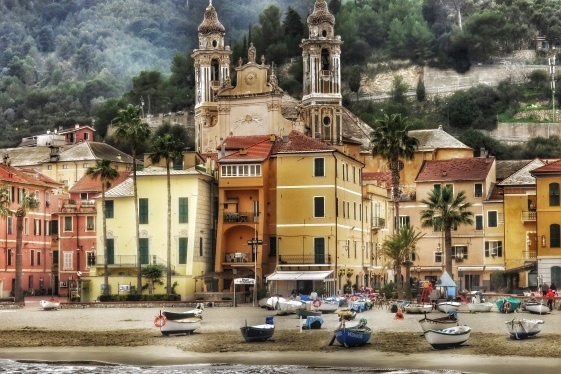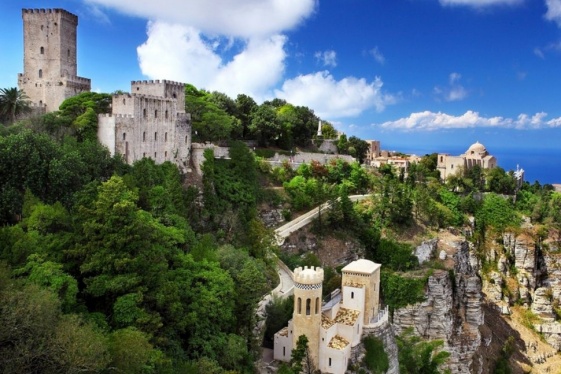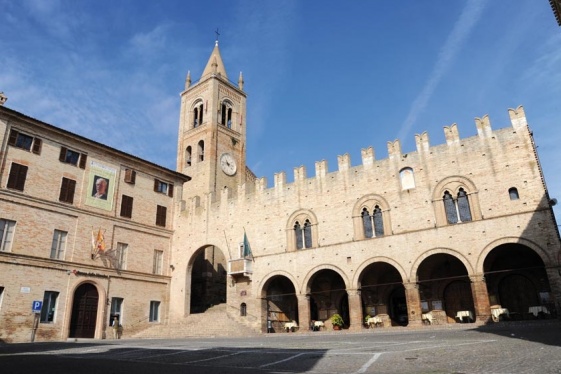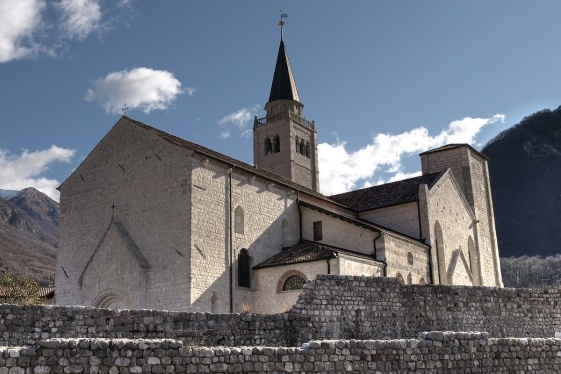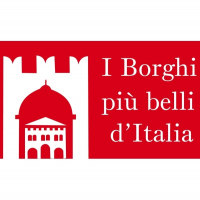
I borghi più belli d'Italia
The goal of our Club, which was not created merely as an integrated tourist promotional operation, is to guarantee - through protection, restoration, promotion and utilization - the preservation of a great heritage of monuments and memories that would otherwise be irretrievably lost. http://www.borghitalia.it/
Italian little Italies: Caprarola, Farnese's dream
Perched on a spur of tuff in the woods of oak and beech forests of the Selva Cimina dreaded by the Roman armies, the borgo of Caprarola expresses the geniality of the Italian Renaissance. The Farnese family entrust to the architecture and the urban planning the celebration of its power, that picks up the best of that age in the field of art: thus,...
Italian little Italies: Posada. The castle, the river, the sea and you
Posada offers several attractions for those who want to immerse themselves in the most uncontaminated nature and experience the deepest traditions. The Rio Posada delta, an appendix downstream of the Tepilora Regional Fluvial Park, and its whole network of canals and ponds, offers marvelous natural landscapes, enriched by the presence of different...
Italian little Italies: Laigueglia, small squares by the sea
With its narrow streets, small squares overlooking the sea and mauve-pink houses, in the shadow of the monumental church of San Matteo, Laigueglia retains the charm of an old fishing village that most coastal towns of Liguria have lost. Meanwhile, from the seaside, filled with colourful boats and nets, and from the wharf in process of regeneration...
Italian little Italies: Altomonte, the Angevin dream
Altomonte is a name that shines on the map, a borgo that is hard to forget, made of stairways and alleys going all around the Church della Consolazione, it is the best example of Gothic-Angevin art in Calabria. You can start your visit from the castle of Norman origin (XII century): expanded and restored by its various landowners throughout time, i...
Italian little Italies: Mel, the twin castle
At the end of the ninth century BC, going up from the plain along the Piave river, the ancient populations of Veneto arrived on this hill that seemed to them a good place to stop. The testimonies of their settlement are preserved in the Archaeological Museum: the findings coming from the necropolis, discovered in the years sixties, are datable betw...
Italian little Italies: Guardiagrele, the gateway to Maiella
You may start your visit of the old town centre from the collegiate church of Santa Maria Maggiore, built at the beginning of the thirteenth century as a cemetery church extra Moenia and become, in the following centuries, the main building of the city. The façade is characterized by a massive bell tower and a beautiful fifteenth-century portal.
Italian little Italies: Erice, the beacon of peace in the Mediterranean
It is difficult to describe the charm of Erice in just a few words. In ancient times, the mountain on which it stands was the site of the cult of a goddess of fertility, adored with the name of Astarte by the Phoenicians, who built her a temple. Aphrodite for the Greeks, for the Romans the goddess who protected sailors was Venus Ericina, the Love G...
Italian little Italies: Anghiari, between Tiber and Arno
Anghiari is a splendid Borgo overlooking the Valtiberina, the green valley of the upper Tiber River. In the middle ages, it was a very important fortified Borgo, with its strong 13th century walls and its strategic position. In the valley below, the famous Anghiari battle took place in 1440: the Florentines here defeated the Milaneses and the famou...
Italian little Italies: San Giovanni in Marignano, where the Malatesta hid the grain
Before entering the Borgo, opposite to the city tower you can admire the church of Santa Lucia. Built on an earlier century religious building in 1786, it is also dedicated to the Madonna “della Scuola”. Of the ancient church, of which the new one has maintained the architectural structure, only a fresco by an unknown author from Romagna depicting...
Italian little Italies: Albori, a white outpost of paradise
Set in a corner of Mount Falerio above the southern stretch of the rocky Amalfi coast, in the Gulf of Salerno, Albori seems suspended between the sea and the mountain. Àlbori is a miniature of the eternal appeal of the Mediterranean. A cluster of colourful houses on the sea front, leaning against each other between lanes and narrow alleyways. Const...
Italian little Italies: Montecassiano, the land of brotherhoods
The borgo of Montecassiano dominates the hill between the Monocchia river and the Potenza river. Its medieval identity is enclosed within the high walls, which still surround the old town, that were built starting from 1437, and that separate it from more recent buildings. The urban structure developed in concentric streets that followed the confor...
Italian little Italies: Venzone, a living room within the walls
Venzone, in the province of Udine, in Friuli Venezia Giulia, owes its fortune to the fact that it has been an obligatory passage to the north since the time of the Celts in 500 BC. Then the Romans made the town one of their stands along the route of the Via Julia Augusta from the site of Aquileia to Norico (now Central Austria). Such information is...





